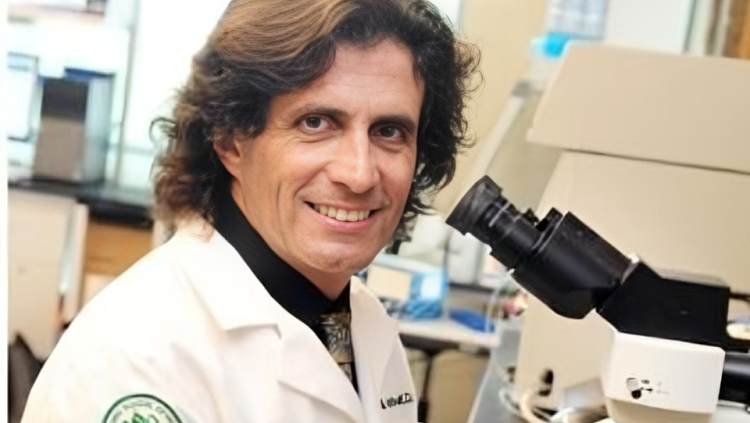Michele Carbone, Director of Thoracic Oncology Program at the University of Hawaii Cancer Center, shared a post on LinkedIn:
“Is there a future for cancer research in the USA? Of course!
However, there is widespread concern that cancer research in the US is on the death bed. Partially true, but the narrative has been distorted to make people believe that everything was going great.
Actually, cancer research was suffering of a slow death; now there is a crisis, and as all crisis, there is the opportunity for improvement. Briefly: From 2003 to 2024 the NCI budget has increased from ~4.6 to 8.5$ billions BUT the buying power of the 2024 budget was 15% less than 2003 (see NCI link below). Worse, the size of the standard NCI/NIH grant, which is called R01, has not changed since 2003: $250,000 (it was 250K also in 2000 when I won my first R01). R01s are the backbone that support cancer research. R01s pay for most of the cost of the academic cancer research in the US.
Worse, the pay-line, which means the percentage of R01s applications that are funded, has gone from 28% in 1997 to 9% last year. In other words, in 1997 28% of grant applications were funded, in 2024, 9%. To fight the decline of funded Principal investigators (PI), the NIH now accepts submission of R01 with multiple PIs. So 1 grant funds 2 or more PIs, but the money is still 250K! Moreover, because each PI must recover at least 10% of her/his salary from the R01, the amount of money left for research is less, but Universities can recover more salary
Worse, the cost of research has skyrocket: the salary of students, post docs and technicians has more than doubled since 2000, the cost of a bottle of serum required to grow cells in culture has gone from $80 to about $800, etc., and we developed new expensive techniques, for example until recently we used immunostains at $8/slide, today to be at the forefront of cancer research we must use Spatial transcriptomics, at the cost of $20,000.00/slide!
How can we pay for all this with 250K/year?
USA is becoming like Europe, where, with rare exceptions, they gave up doing any meaningful cancer research. In the US Pharma already spends 2X more than the NCI in cancer research. But Pharma does not invest in rare cancers which together account for about 25-35% of all cancer diagnoses. And Pharma for the most part does not support research in cancer prevention, early diagnosis, etc., they need to develop drugs to make money. Look, 1/3 of us dies of cancer, we can do better than that. Cancer research has produced fantastic results: many of us have never developed cancer or have been saved from cancer, because of cancer research. Most of the progress in cancer research was done in the USA, with NCI support. It is something to be proud of!
Hopefully this crisis will not kill the patient (cancer research) but rather will be the opportunity to reorganize and re-focus cancer research on its original mission to save lives to cancer. It can be done.”
Bernard A. Fox, Co-Founder, President, and CEO of UbiVac, shared a post by Michele Carbone on LinkedIn:
“Prof. Michele Carbone, – Thank you for your commentary and for posting the NCI slides on budgets, programs, and Grant funding. You are right on target. Cancer research was suffering a slow death.. But the current situation is a real crisis!
The NCI slide deck provides the numbers.
Michèle, like you, my first RO1 was $250K and it started April 1st 1999 – No joke. Everyone knows that the cost of everything have risen drastically since then. In my case philanthropy and my endowed chair, plus some pharma collaborations keep the lab functioning. But I am in a small Institute. The faculty in large medical schools and research universities, with cuts to their indirect cost rate – the $s that fund infrastructure and so much more – will cripple research in general, and cancer research specifically. The pressure on the scientists today to captures some money to survive is intense. Once a lab closes, and many will, you loose a team of trained investigators working together to solve a given problem. That cannot be reconstituted easily.
But we have other problems. In the last 2 years 49 biotechs have closed their doors.
The majority of new drugs come from biotechs that frequently spin-out from academic labs, that were funded by the NIH (99.4% of new drugs funded by NIH – details at link below). The drug development food-chain is being interrupted and we are going to have a gap with few new potential treatments for cancer, heart disease, dementia, Alzheimer’s, and the spectrum of diseases. Rare diseases will likely be hit hardest, as their ranks have the least depth.
Today our goal is to continue to raise awareness of the crisis. Historically this was a non partisan issue. The US Senator from the great state of Oregon, Mark O Hatfield, a Republican, whose name is on the NIH clinical center, was a tireless advocate for biomedical research. We need to educate our elected officials, as well as family, friends, and neighbors, on the impact of these cuts.”
